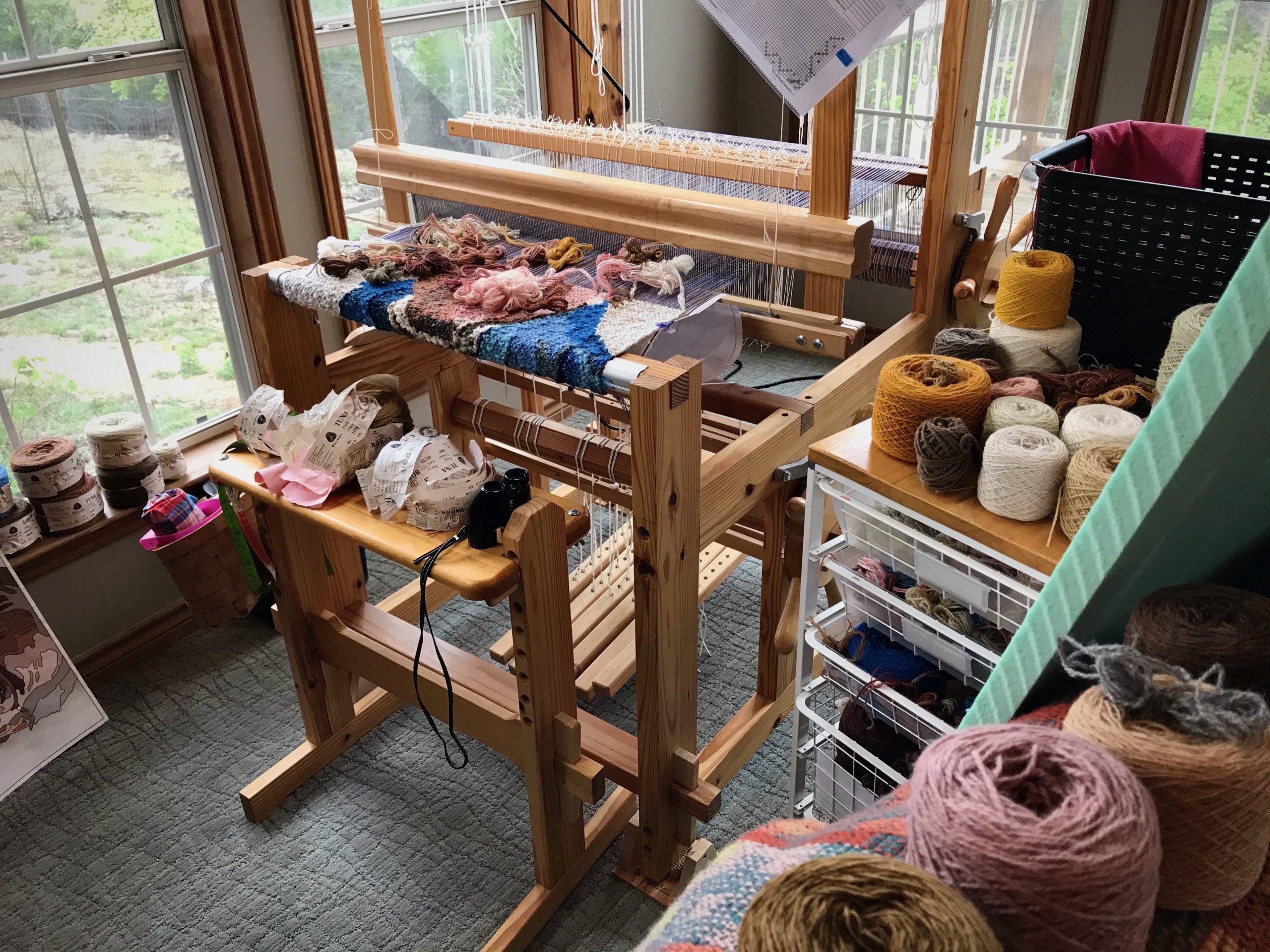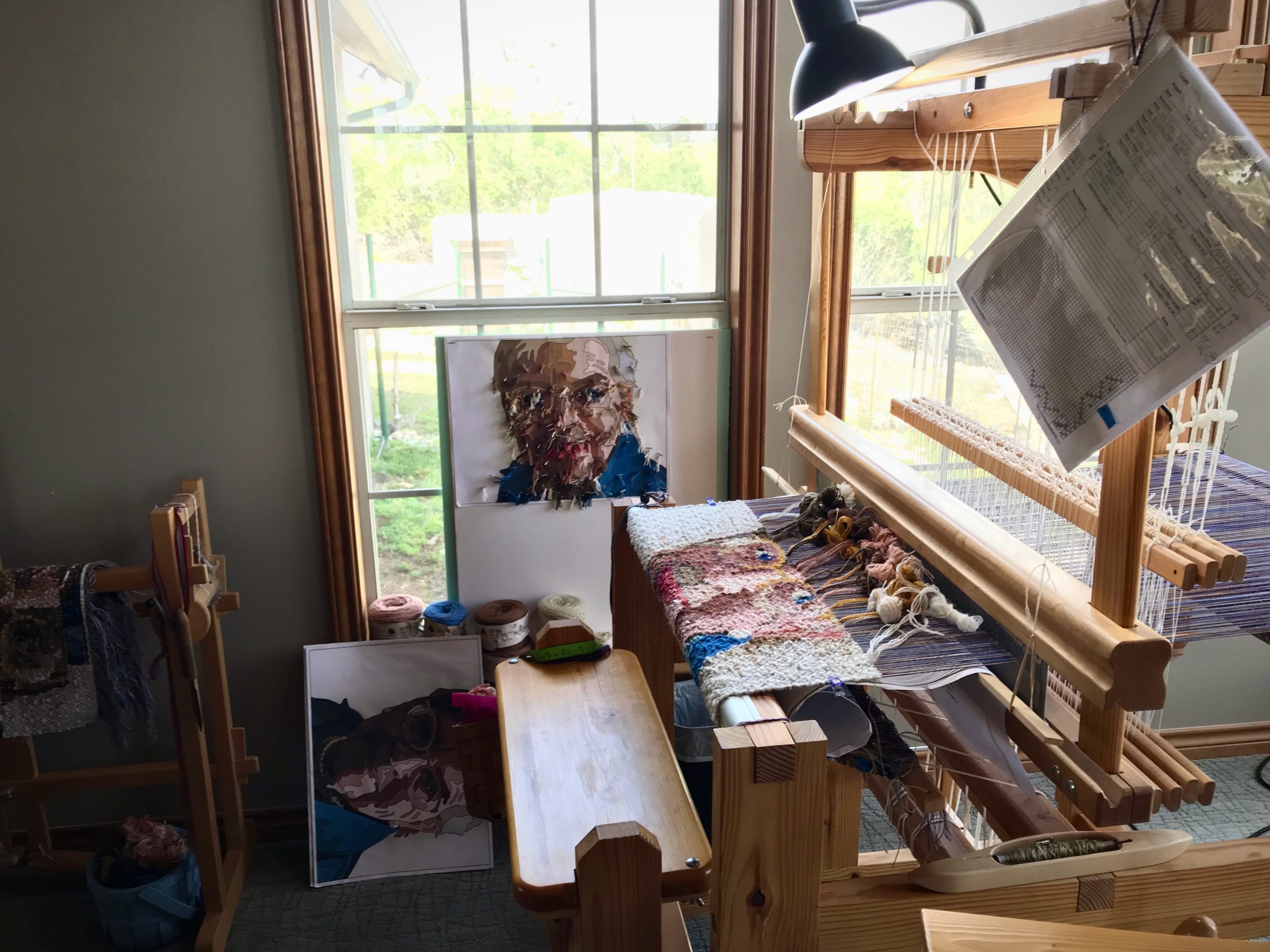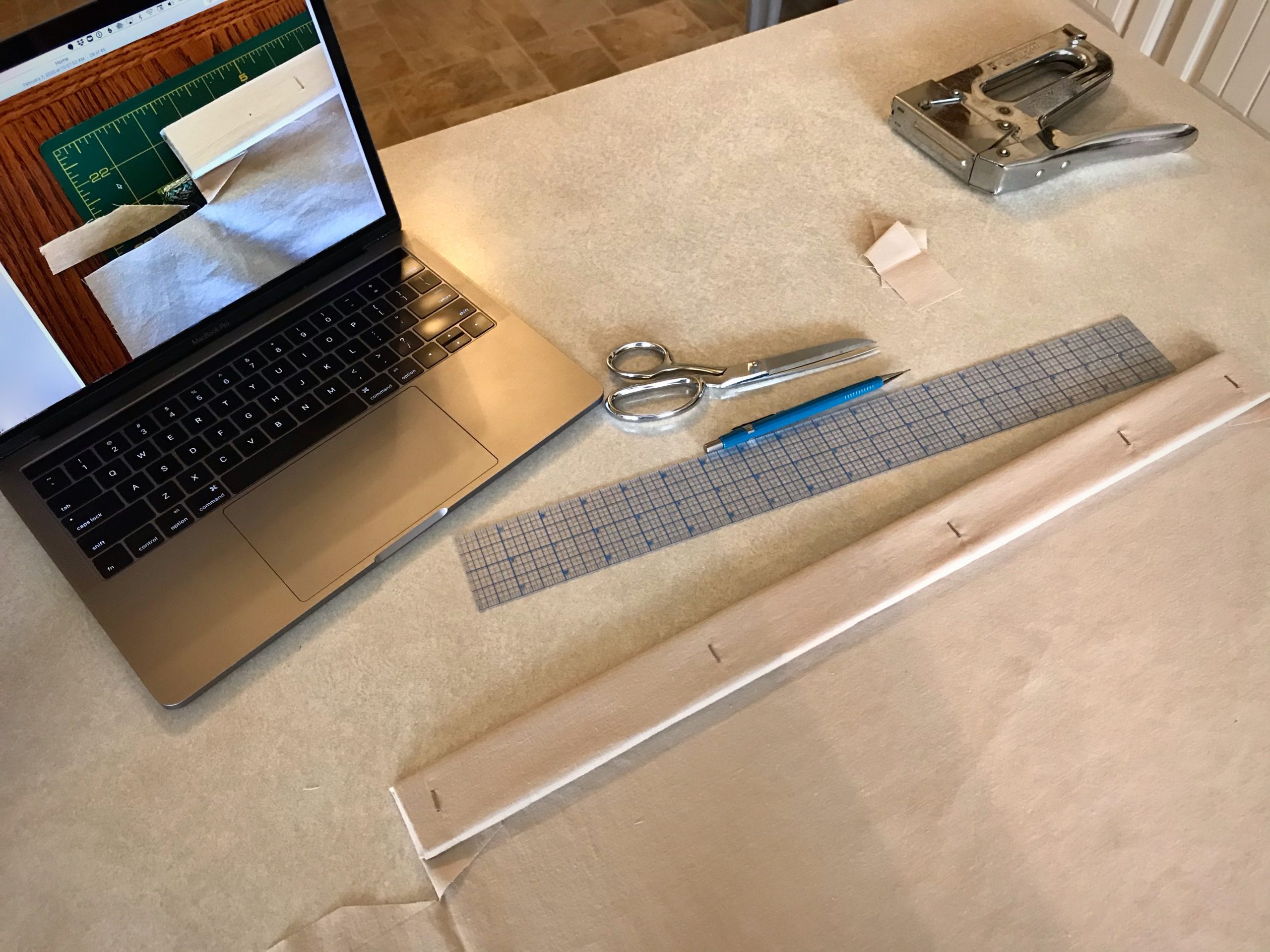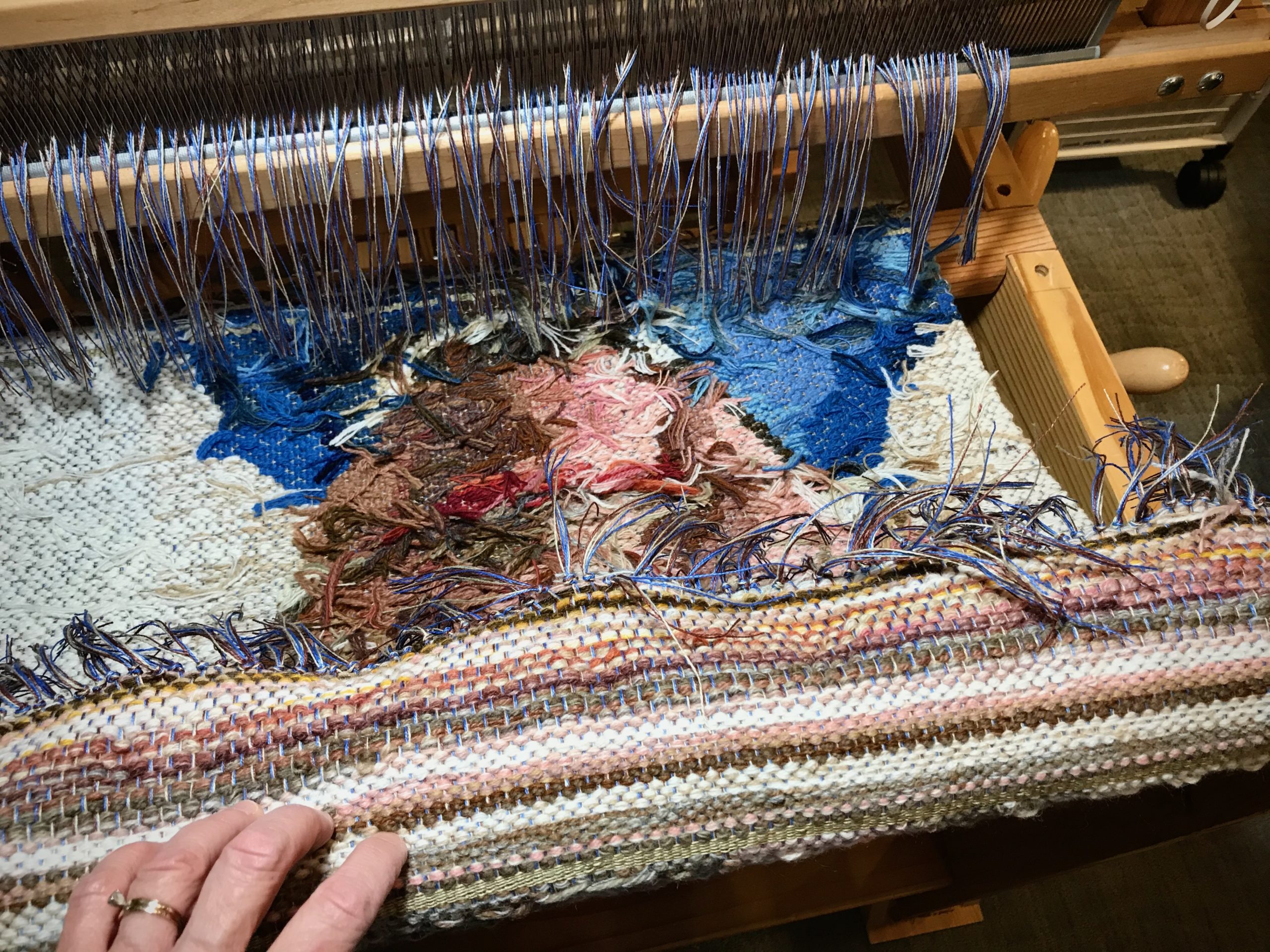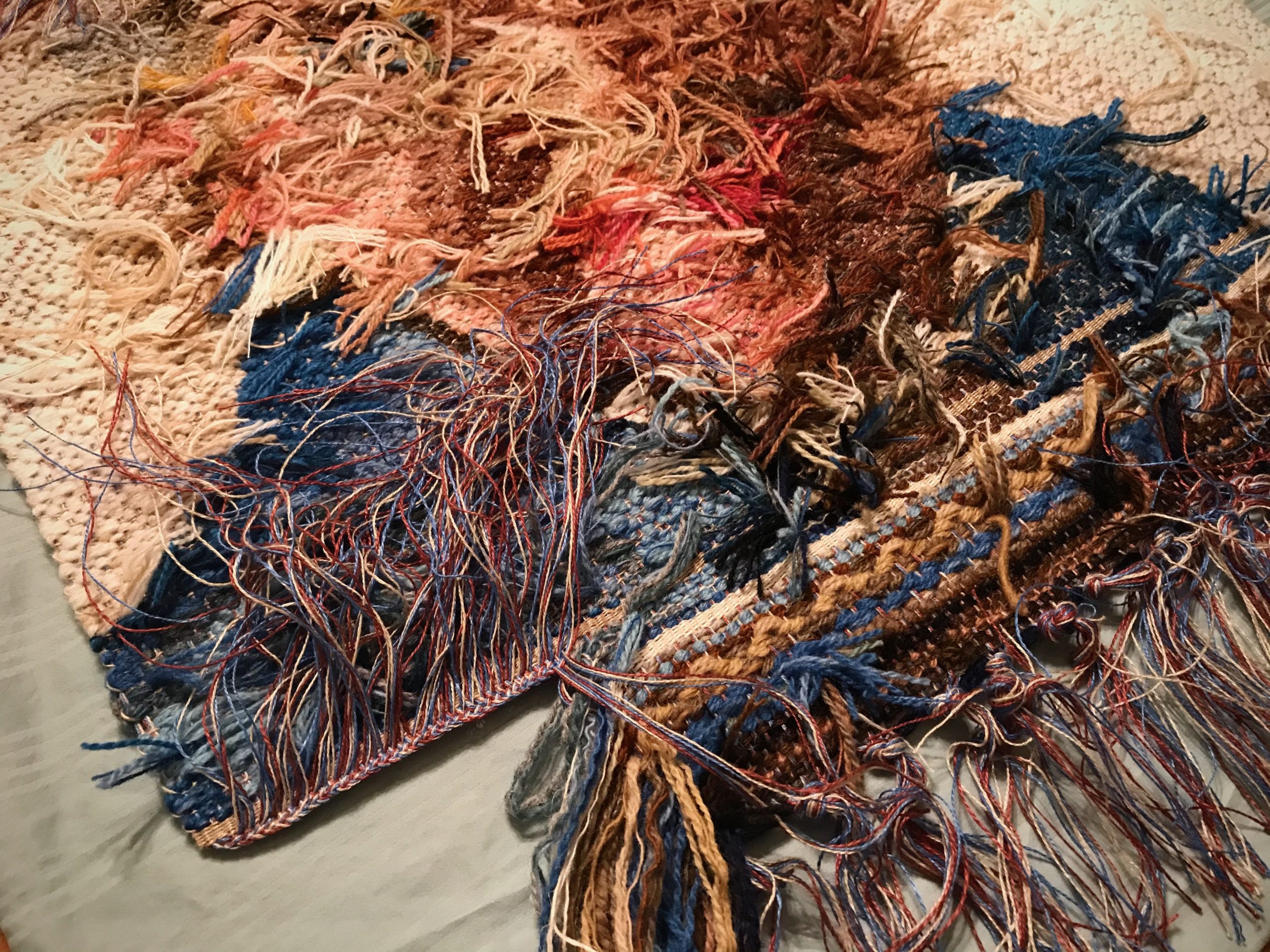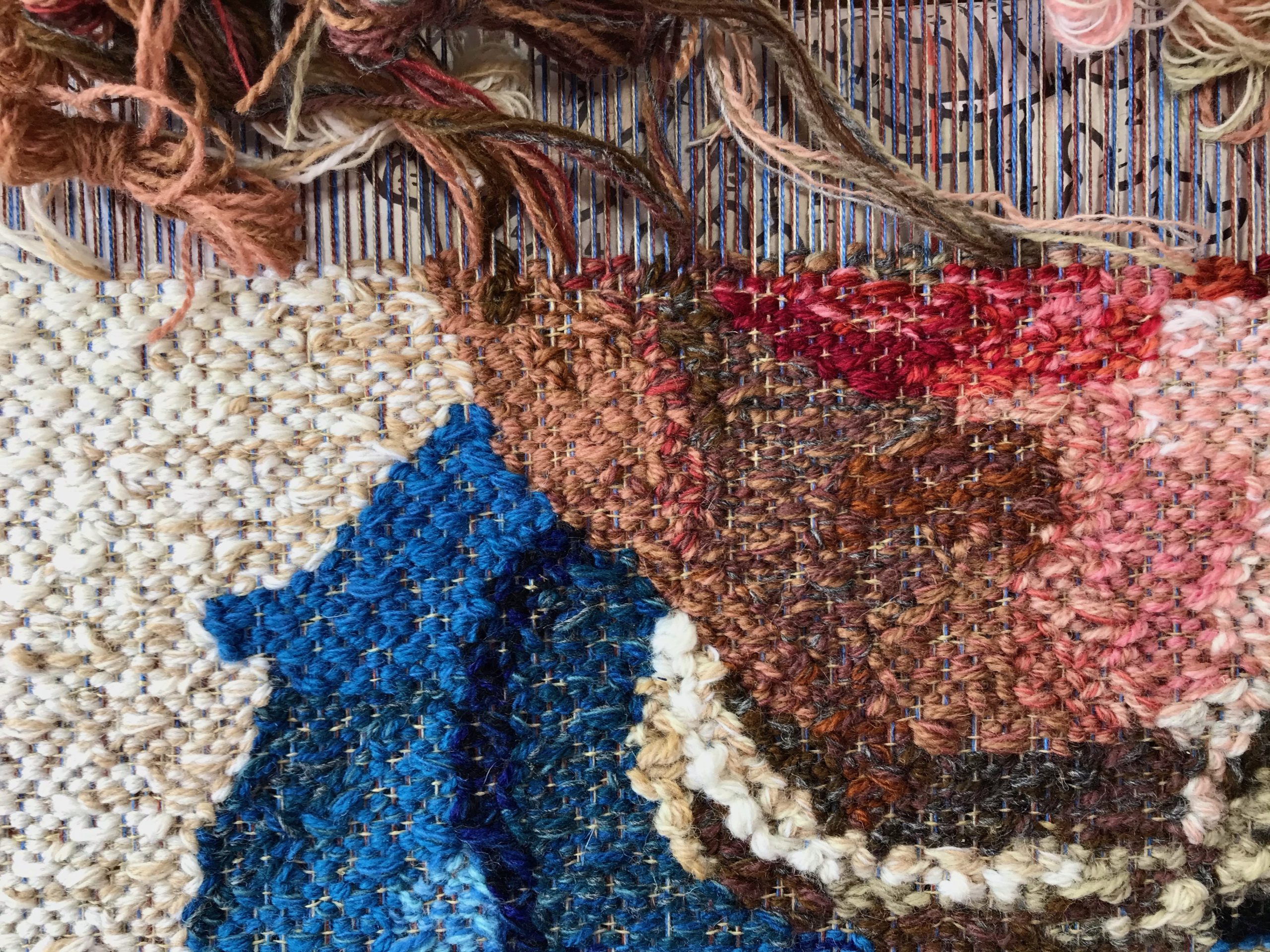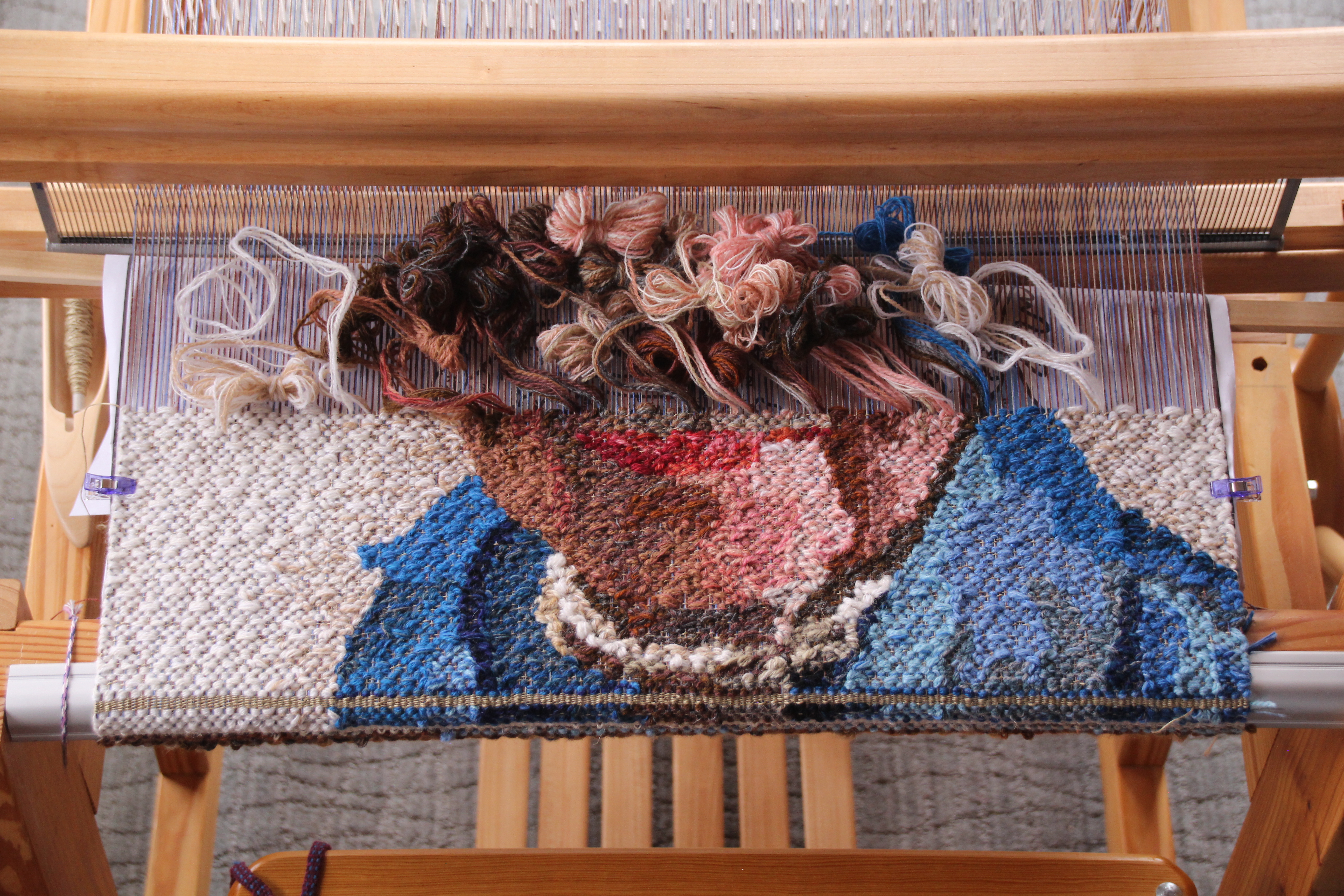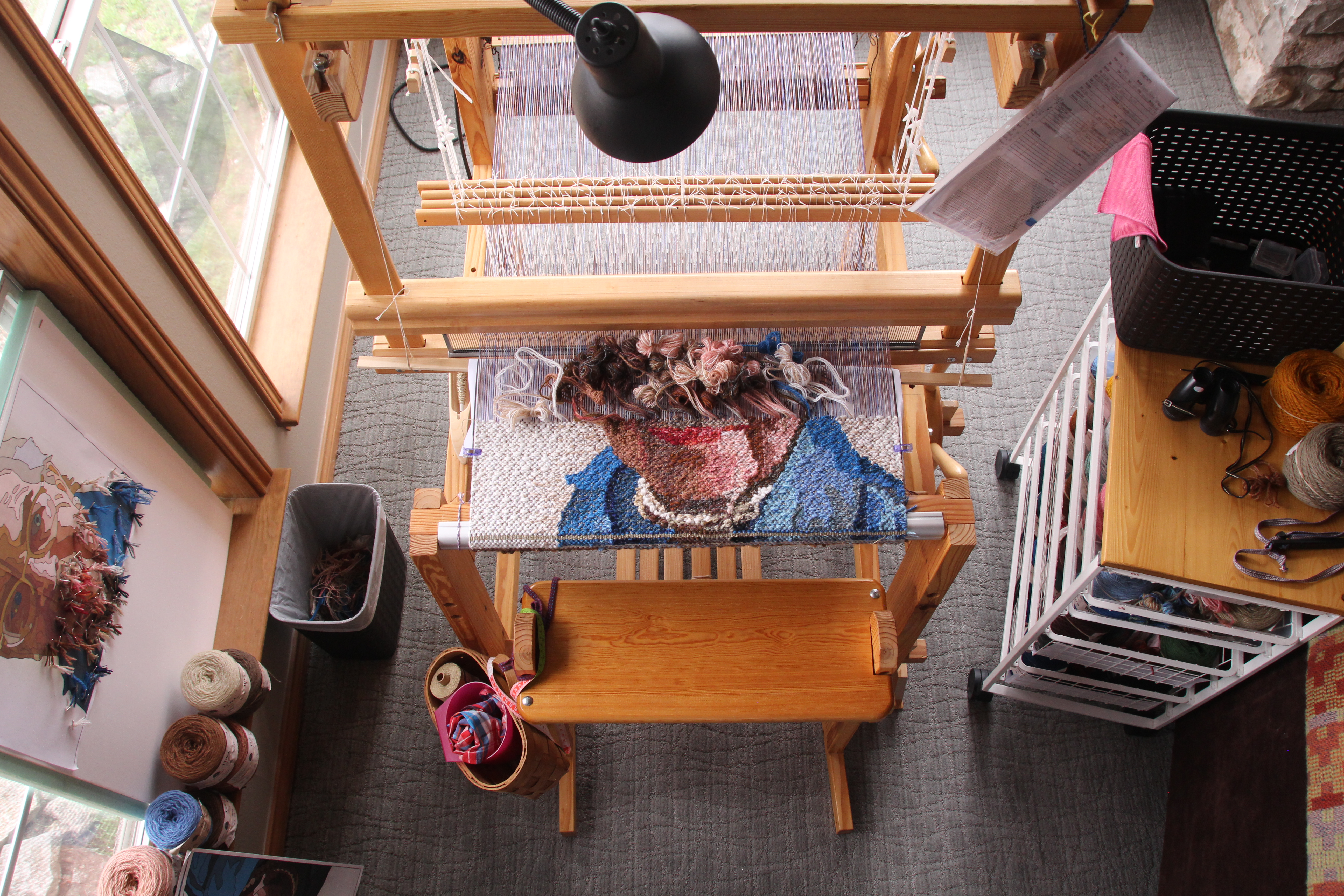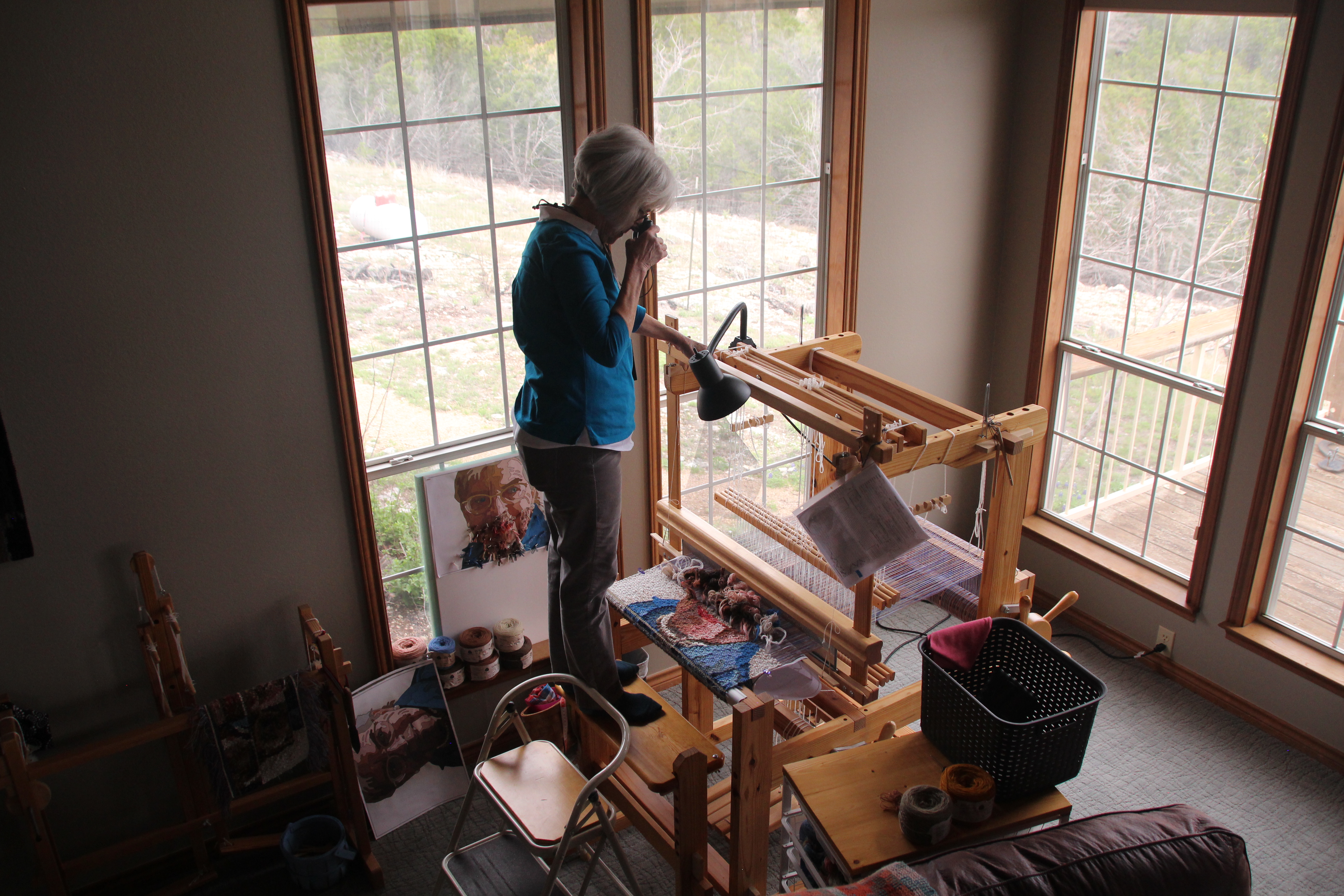I allowed the remaining warp to sit on the loom for a little while after cutting off the Eye of the Beholder tapestry. It crossed my mind to be completely done with it. Go ahead, discard the bit of warp that is left, I told myself. But this is linen. I have a hard time discarding linen.
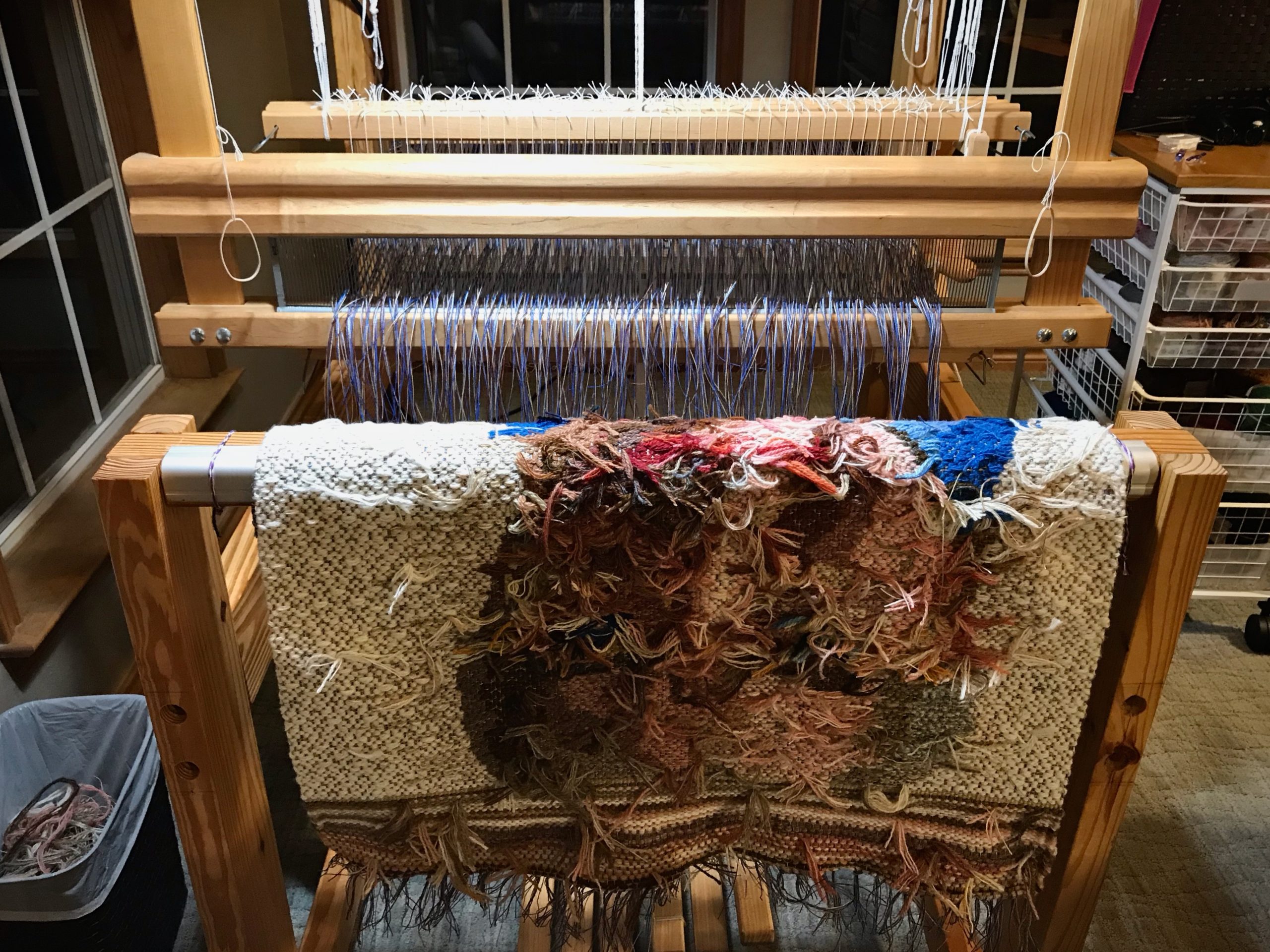
The warp on the loom is threaded in rosepath, with a coarse sett of 3 ends per centimeter (7.5 ends per inch). The potential weaving length is no more than 20-30 centimeters. Then, the “what if” happens. What if…I use leftover butterflies from the tapestry as weft for a short rosepath design? One thing leads to another. Now, I have a new favorite purse. The tapestry memories live on!

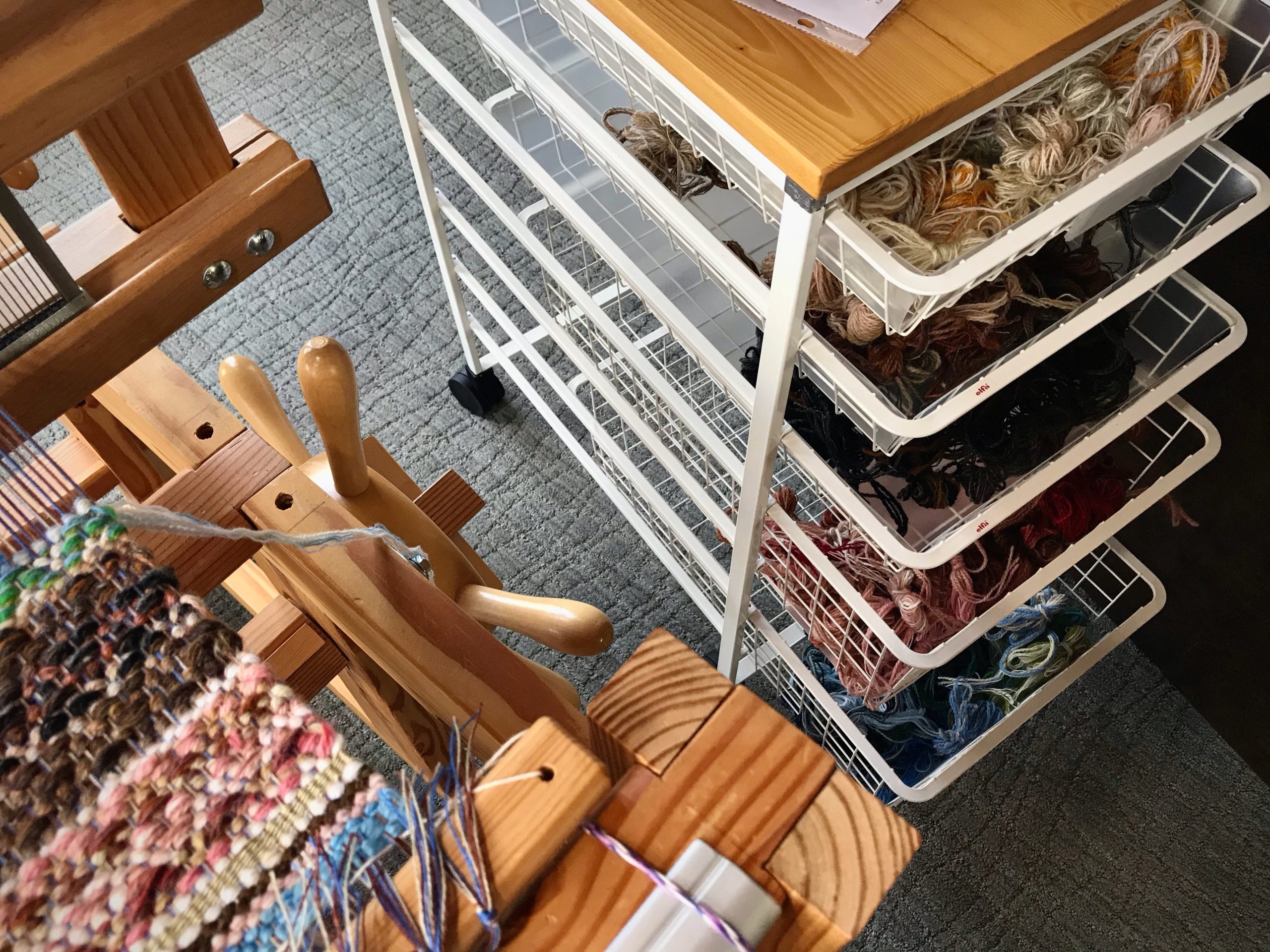
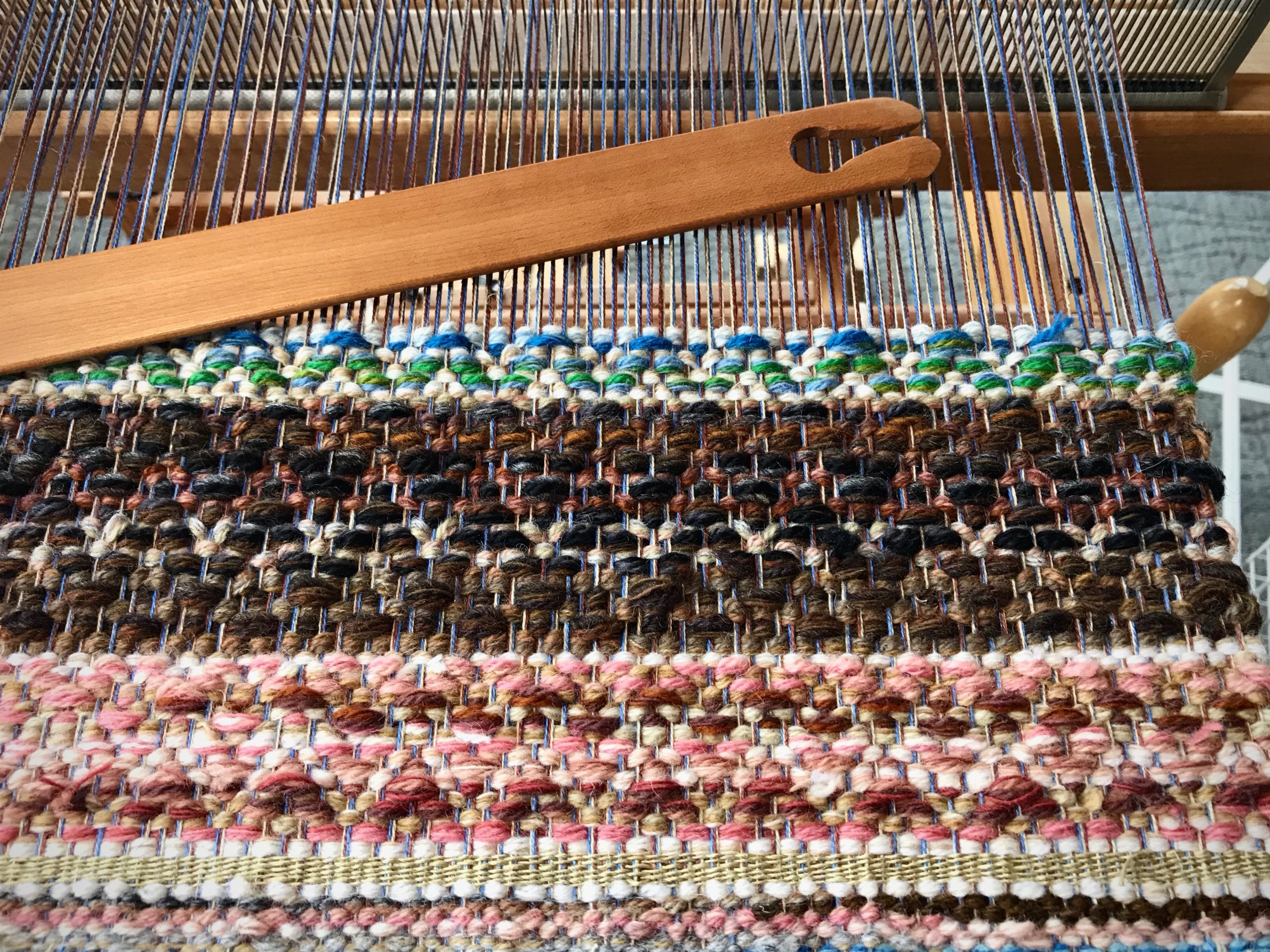
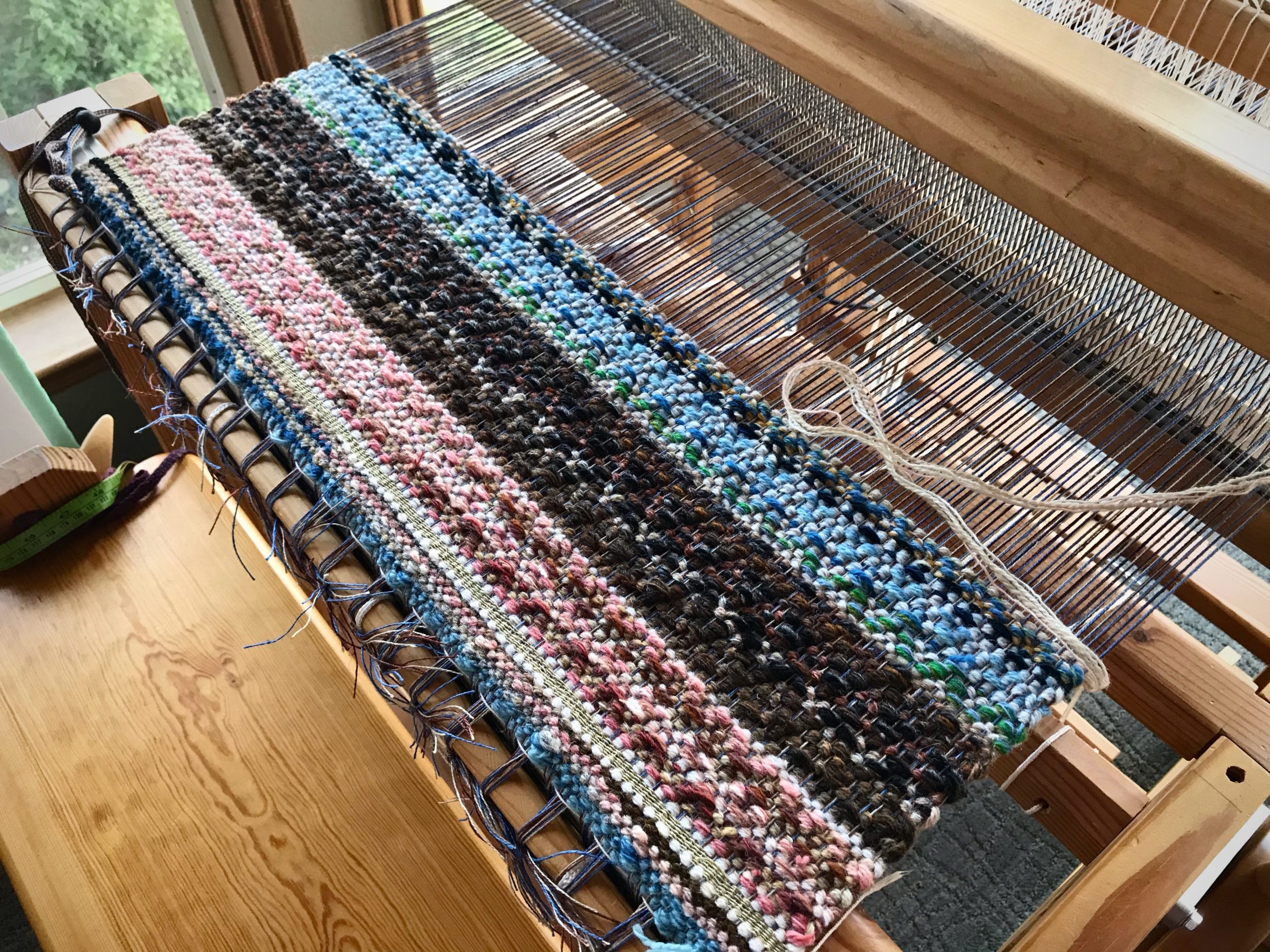
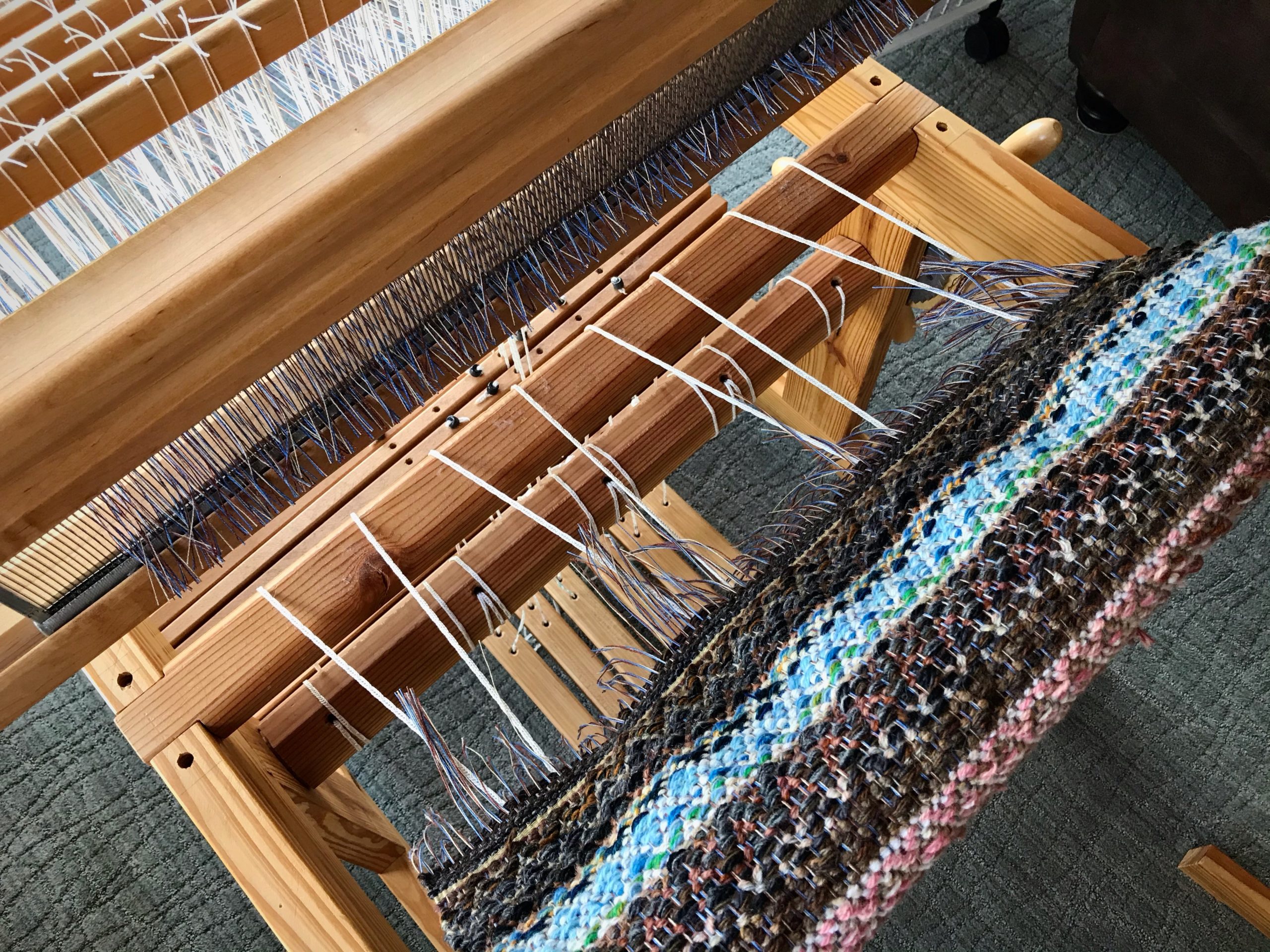
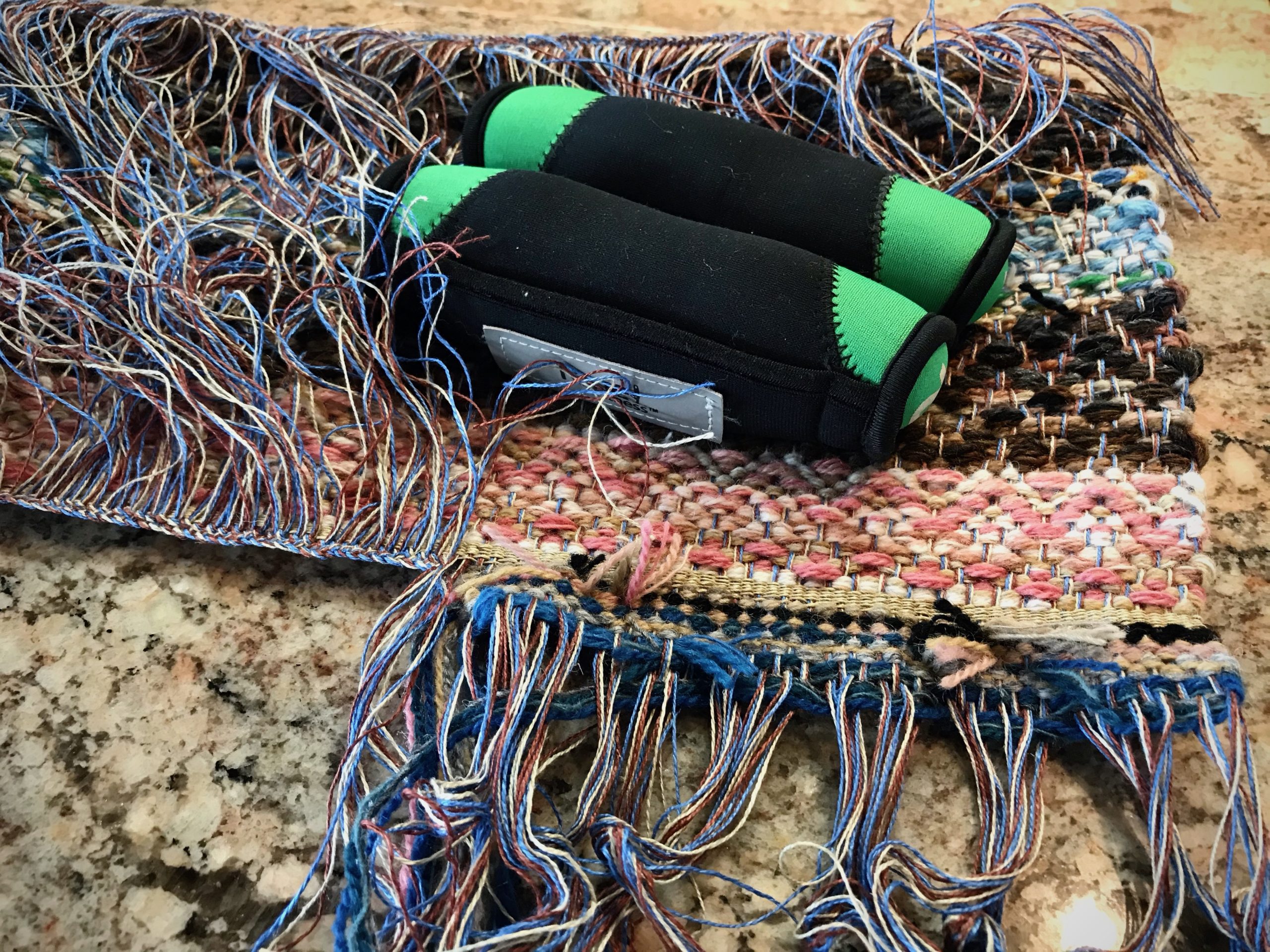



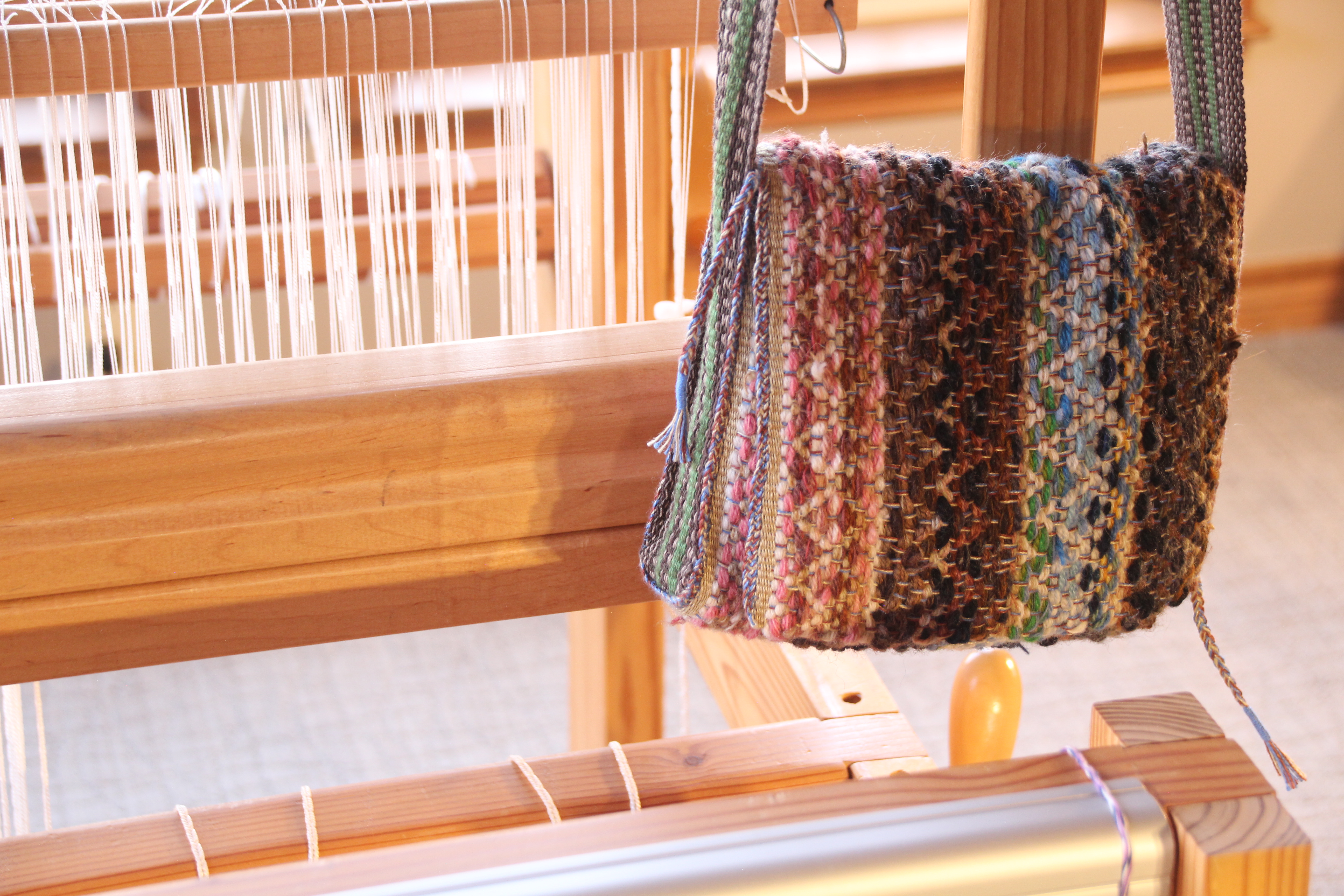
May you know when to ask, “What if?”
Be blessed,
Karen

